
Culture
18:35, 01-Jan-2018
Five countries’ traditional food for New Year
By Wei Yutong
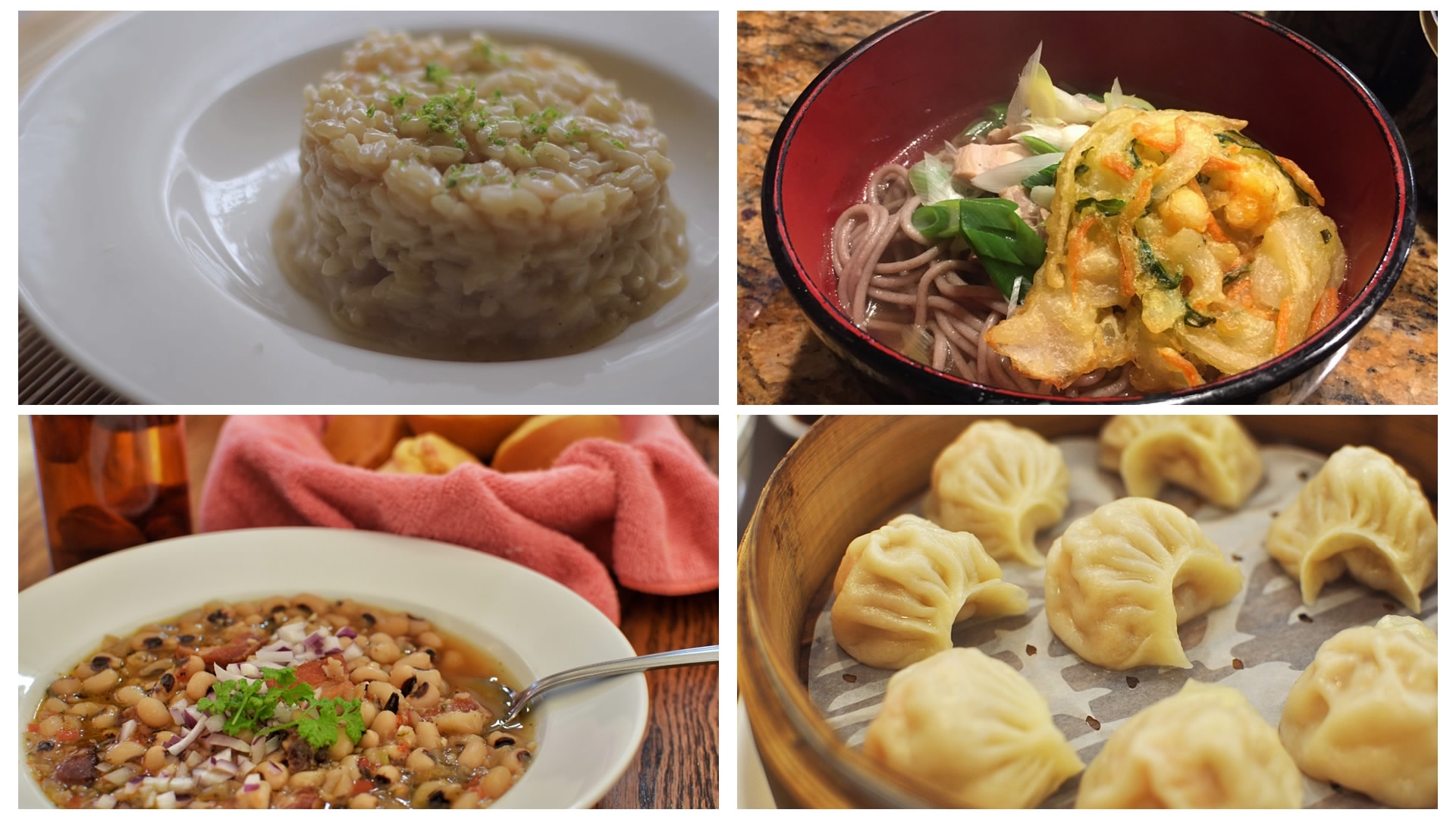
It is the start of 2018. The New Year brings family and friends together around tables of traditional food and customs around the world. Different countries have different New Year's meals and recipes including food with a variety of explanations for symbolism. There is also common "lucky" food eaten on the New Year Eve or Day worldwide, such as pork in the US, Italy, Austria, Spain, Portugal, Cuba and several other countries.
The United States
American culture features some food symbolic of wishes for the coming next year, especially in southern part of the US, a few sorts of food is truly considered as ensuring for good luck and wealth.

Pork chop, peas and beans /Flickr Photo
Pork chop, peas and beans /Flickr Photo
An American New Year's day meal includes greens are served as they symbolize money and wealth. Pork is regarded as a sign of prosperity because of pigs’ forward root. Cornbread resembles gold, and it is the traditionally paired with another lucky food, peas or beans. Peas and beans also resemble money - coins specifically - and guarantee good fortune for the coming year.

"Hoppin' John" /Photo via Wikimedia Commons
"Hoppin' John" /Photo via Wikimedia Commons
It can be found that people throughout the south US eat the lucky food black-eyed peas as New Year tradition, which is called "Hoppin' John" made a dish seasoned with pork, ham or sausage and today this tradition has tended to other parts of the country, as well.
Italy
Italians have their own food traditions to celebrate new year arrives and wish for a lucky year.
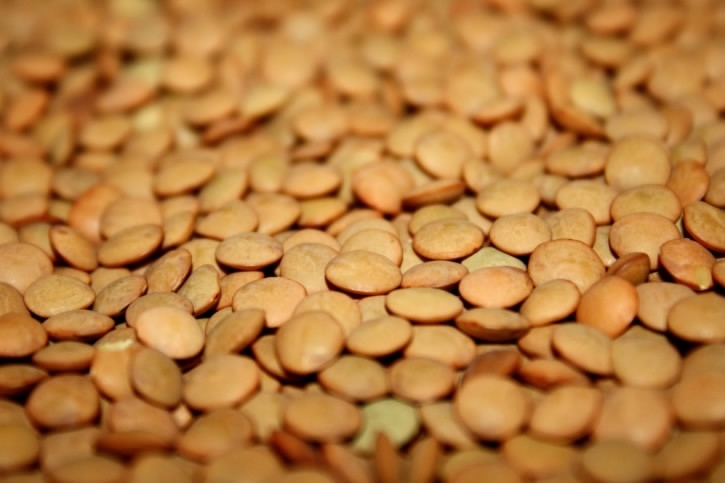
Lenticchie /Pixnio Photo
Lenticchie /Pixnio Photo
Lenticchie (Lentils) is the superstar of many Italian dinners on New Year Eve, which is considered to bring prosperity formed with the coin-like shape. Lentils are always served with either cotechino or zampone since pork is a lucky food also representing prosperity - because it is fatty and rich.
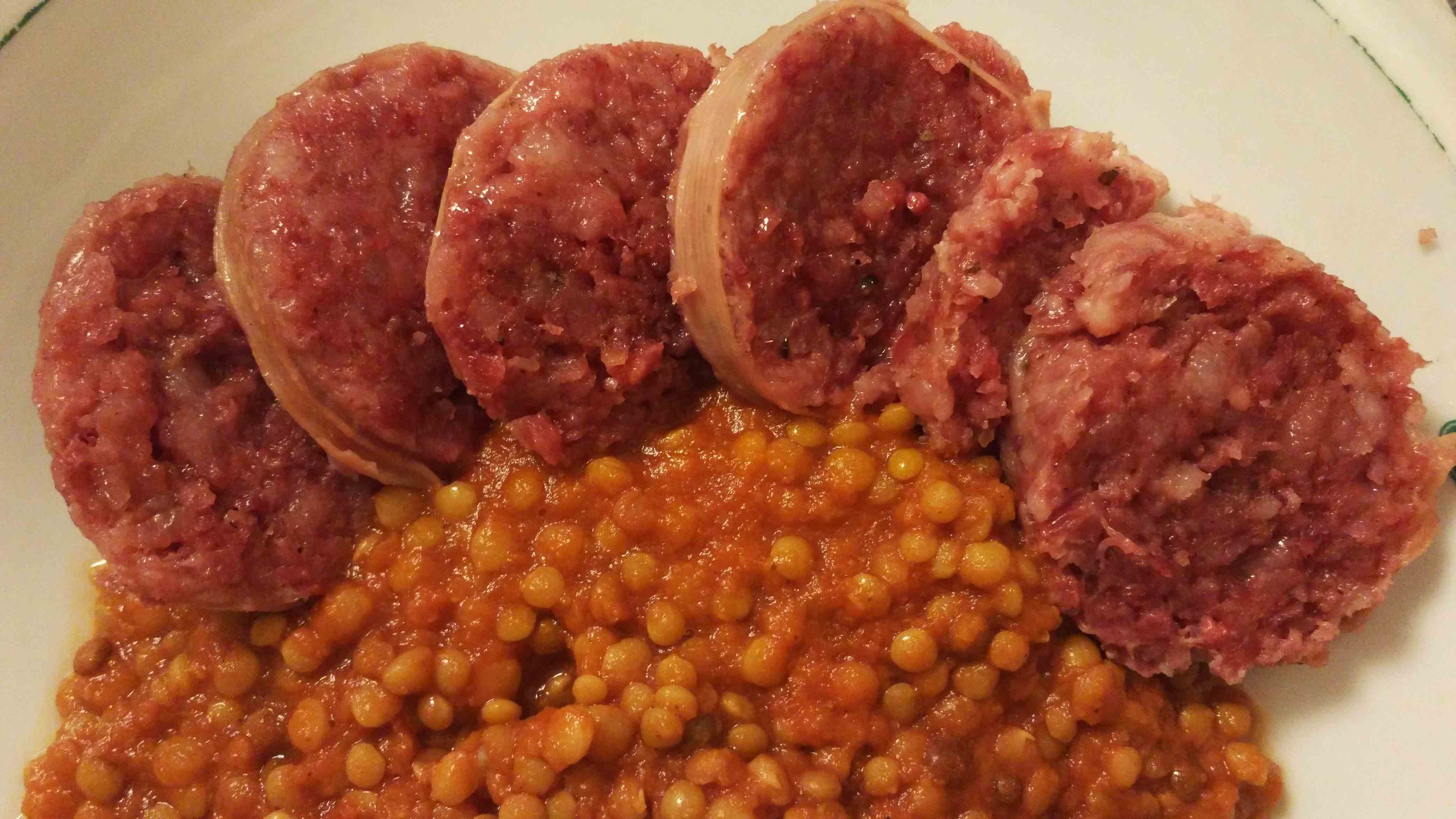
Cotechino /Photo via Wikimedia Commons
Cotechino /Photo via Wikimedia Commons
Cotechino is a large sausage. There are three basic steps to make cotechino a dish – first, buy it partially cooked or raw; second, simmer it over low heat; third, sliver it into rounds. Zampone is a typical alternative to cotechino, which is a hollowed-out pig’s trotter filled with a sausage. And its cooking process is much like cotechino.
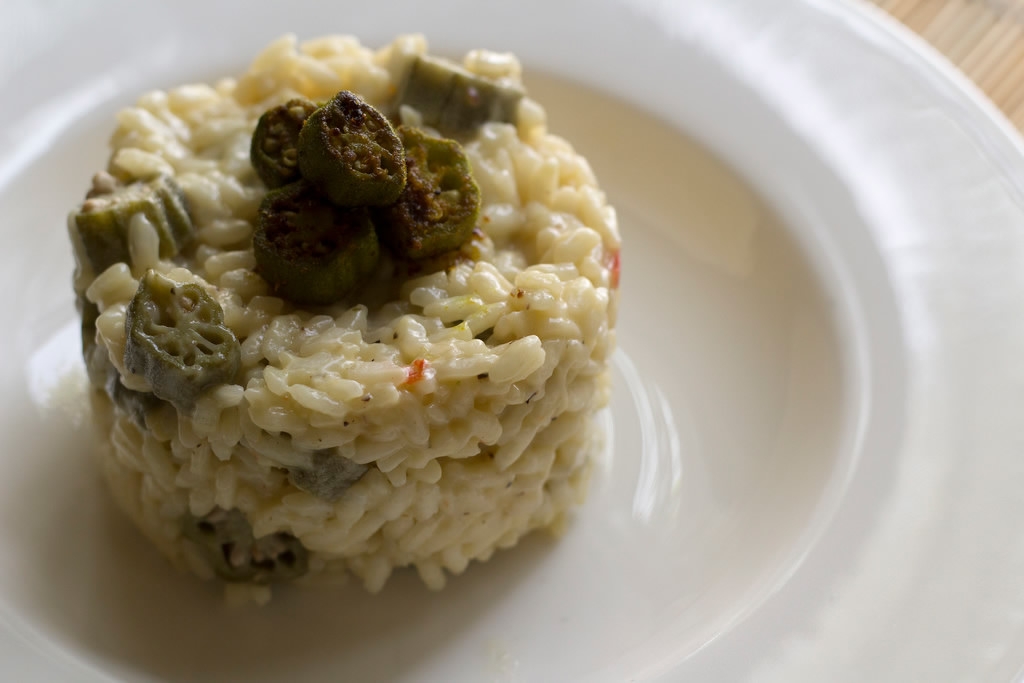
Risotto in bianco /Flickr Photo
Risotto in bianco /Flickr Photo
Risotto in bianco (White risotto) is believed as a token of wealth. In some areas of Italy, grains of rice resemble coins, and while cooking rice grow in the pot the way that people hope their fortune to rice and multiply in the coming days.
Denmark
In Denmark, a dish of the traditional New Year's meal menu is boiled cod, served with home-made sauce and trimmings commonly, while certain Danish opponent to its taste.
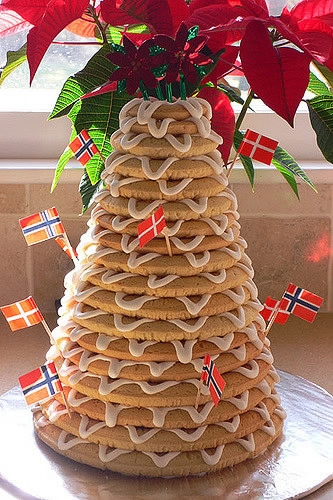
Kransekage /Flickr Photo
Kransekage /Flickr Photo
There is another more famous New Year food, Kransekage, also called "wreath cake." This dessert is a towering cake formed by layer-upon-layer of marzipan rings. The cake's shape could be evocative of a cornucopia, thus seen as a horn of plenty. People believe it could bring and promise happiness and wealth, so that it is not only served on New Year Eve but also other special occasions including Christmas, weddings, and baptisms. And Norwegians also eat Kransekage on memorable days.
Japan
Toshikoshi soba, the Japanese year-crossing noodle, is a traditional food eaten on New Year's Eve in the country. It is made from buckwheat noodles in a hot soup. Japanese custom requests people to slurp this dish guaranteeing a lucky year.
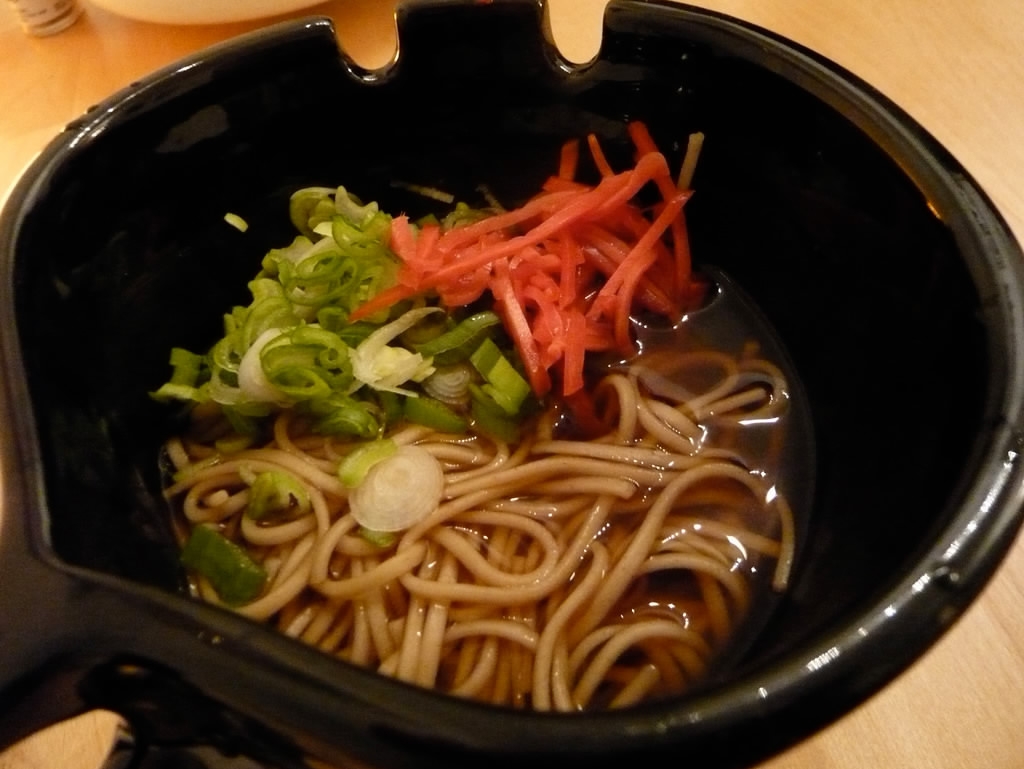
Toshikoshi soba /Photo via Wikimedia Commons
Toshikoshi soba /Photo via Wikimedia Commons
There are a few theories trusted that long soba noodles represent a long life, while several others thought taking Toshikoshi soba can let go of difficulties and hardship of the year since soba noodles are easy to cut while eating. Some people also believe it is a sign of strength and flexibility because the buckwheat plant has the ability to survive severe weather during the growing period.

Osechi-ryori /Flickr Photo
Osechi-ryori /Flickr Photo
Japanese people commonly eat osechi-ryori – food for special days and festivals named in a polite and honorific way - during the month after New Year. It is made with a few colorful dishes packed in layers of lacquer boxes, traditionally prepared at most Japanese homes days before New Year Eve but today it could be found in stores in Japan. Those dishes always include simmered kombu rolls, simmered black soybeans, candied dried sardines and so on. Various dishes symbolize various meanings, such as health, harvest, happiness, prosperity, long life, and so on.
China
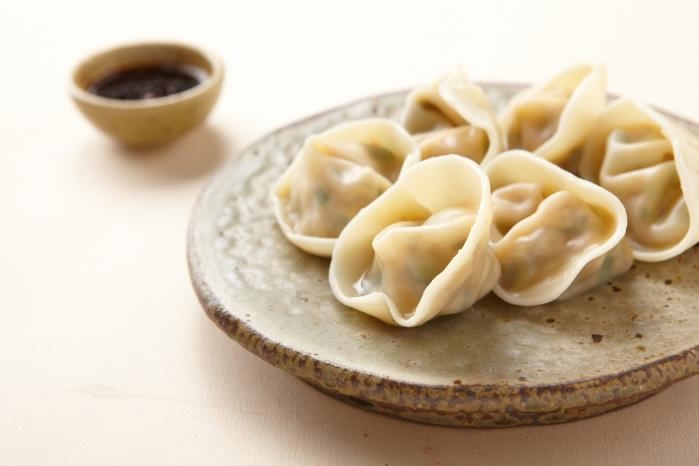
Dumplings /Photo via Wikimedia Commons
Dumplings /Photo via Wikimedia Commons
In China, family and friends gather around tables and have a feast for dinner, while most of them do not have specific food traditions or customs. Since there is another more significant day for Chinese people in January or February each year – the Spring Festival. Spring Festival is the Lunar New Year in China, while this day is the beginning of a new year for Chinese. People enjoy a variety of traditional foods on the eve of Spring Festival.
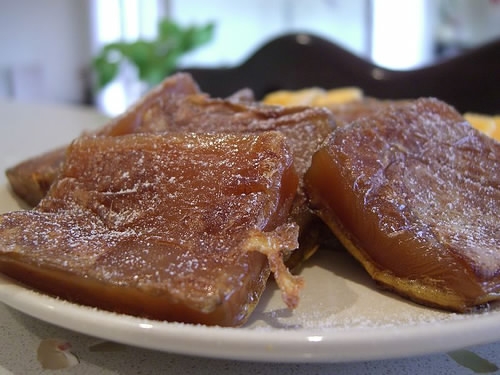
Chinese New Year rice cakes /Photo via Wikimedia Commons
Chinese New Year rice cakes /Photo via Wikimedia Commons
On December 31, in the northern part of China, some people eat dumplings, and in the southern part, some people eat New Year rice cakes, as these foods featuring symbolic of long life, wealth, happiness and luck in the coming next year in several folk cultures.

SITEMAP
Copyright © 2018 CGTN. Beijing ICP prepared NO.16065310-3
Copyright © 2018 CGTN. Beijing ICP prepared NO.16065310-3